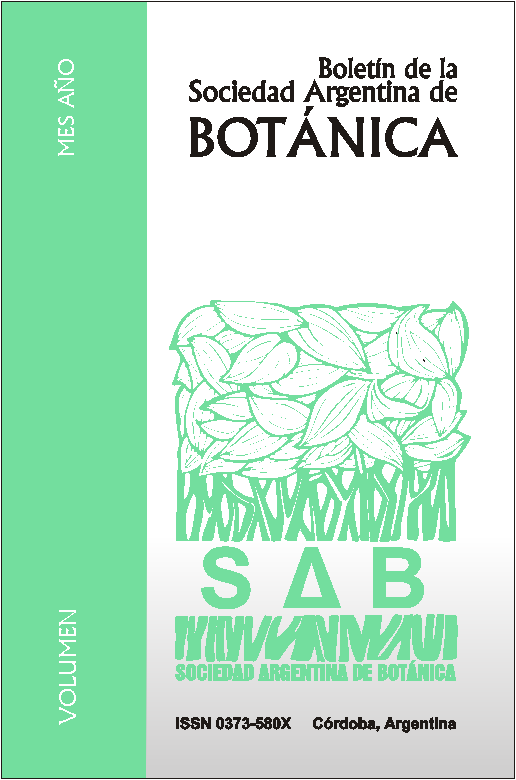Invasive alien trees and shrubs in Córdoba Province (Argentina): a contribution to the systematization of global bases
DOI:
https://doi.org/10.31055/1851.2372.v49.n4.9991Keywords:
Database, invasive exotic species, invasive native species, invasibility, invasivity, woody plants, South America.Abstract
Invasive alien trees and shrubs in Córdoba Province (Argentina): a contribution to thesystematization of global bases. We present the first database of invasive alien trees and shrubs of Córdoba Province and analyze it in the context of current national and global databases. We identified 34 invasive woody alien species. Most aliens are from Europe, Asia and Middle East origin, introduced for horticulture reasons. Grasslands are the most invaded ecosystem (39%), followed by woodlands and shrublands (32%). Most of the species (59%) are dispersed by animals (birds) and wind (35%). Except for
two species, most of the species has also been recorded as invaders in other areas of the world. However, only half of them are currently registered as invaders in South America. This might reflect the notably lower research on biological invasions within the continent and the subsequent bias and underestimation of its invasibility. Two species (Cupressus macrocarpa and Zanthoxylum armatum) should be incorporated as new species in the global database. We also refer to some missing information in two major national databases, hoping to contribute with their updating. Finally, we mention six species native to Argentina to be considered as native invaders of Cordoba Province ecosystems. Overall, we expect to provide useful information for the development of basic and applied studies of biological invasions.
Downloads
Issue
Section
License
Provides immediate and free OPEN ACCESS to its content under the principle of making research freely available to the public, which fosters a greater exchange of global knowledge, allowing authors to maintain their copyright without restrictions.
Material published in Bol. Soc. Argent. Bot. is distributed under a Creative Commons Attribution-NonCommercial-ShareAlike 4.0 International license.





